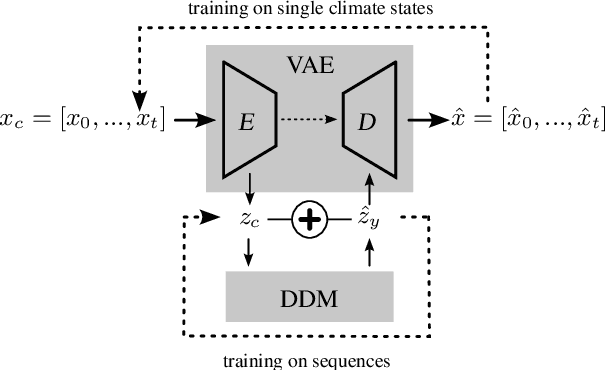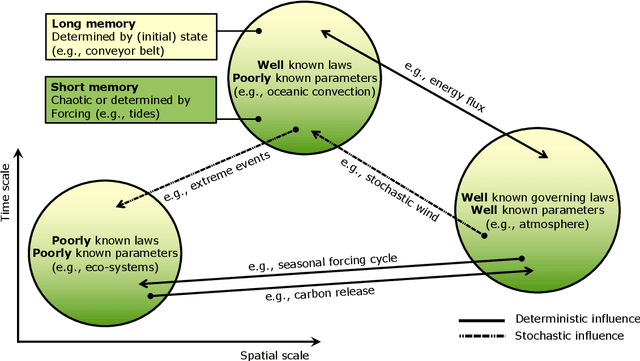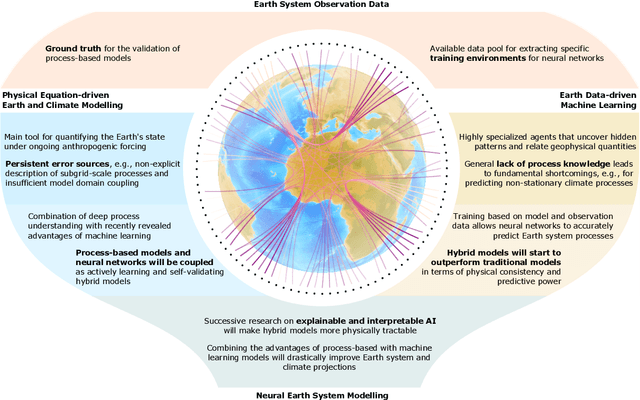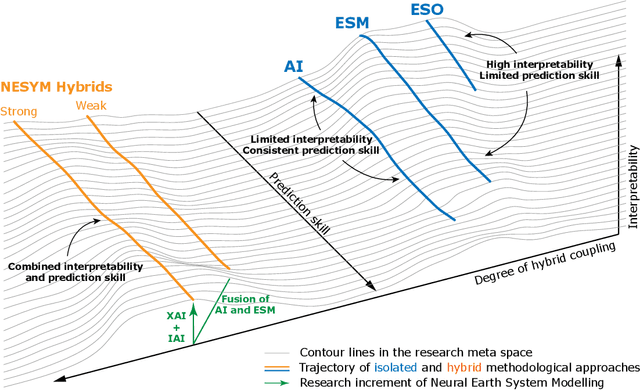Christopher Kadow
German Climate Computing Center DKRZ, Hamburg, Germany
Field-Space Attention for Structure-Preserving Earth System Transformers
Dec 23, 2025Abstract:Accurate and physically consistent modeling of Earth system dynamics requires machine-learning architectures that operate directly on continuous geophysical fields and preserve their underlying geometric structure. Here we introduce Field-Space attention, a mechanism for Earth system Transformers that computes attention in the physical domain rather than in a learned latent space. By maintaining all intermediate representations as continuous fields on the sphere, the architecture enables interpretable internal states and facilitates the enforcement of scientific constraints. The model employs a fixed, non-learned multiscale decomposition and learns structure-preserving deformations of the input field, allowing coherent integration of coarse and fine-scale information while avoiding the optimization instabilities characteristic of standard single-scale Vision Transformers. Applied to global temperature super-resolution on a HEALPix grid, Field-Space Transformers converge more rapidly and stably than conventional Vision Transformers and U-Net baselines, while requiring substantially fewer parameters. The explicit preservation of field structure throughout the network allows physical and statistical priors to be embedded directly into the architecture, yielding improved fidelity and reliability in data-driven Earth system modeling. These results position Field-Space Attention as a compact, interpretable, and physically grounded building block for next-generation Earth system prediction and generative modeling frameworks.
Latent Diffusion Model for Generating Ensembles of Climate Simulations
Jul 02, 2024



Abstract:Obtaining accurate estimates of uncertainty in climate scenarios often requires generating large ensembles of high-resolution climate simulations, a computationally expensive and memory intensive process. To address this challenge, we train a novel generative deep learning approach on extensive sets of climate simulations. The model consists of two components: a variational autoencoder for dimensionality reduction and a denoising diffusion probabilistic model that generates multiple ensemble members. We validate our model on the Max Planck Institute Grand Ensemble and show that it achieves good agreement with the original ensemble in terms of variability. By leveraging the latent space representation, our model can rapidly generate large ensembles on-the-fly with minimal memory requirements, which can significantly improve the efficiency of uncertainty quantification in climate simulations.
Dynamic Deep Learning Based Super-Resolution For The Shallow Water Equations
Apr 09, 2024Abstract:Using the nonlinear shallow water equations as benchmark, we demonstrate that a simulation with the ICON-O ocean model with a 20km resolution that is frequently corrected by a U-net-type neural network can achieve discretization errors of a simulation with 10km resolution. The network, originally developed for image-based super-resolution in post-processing, is trained to compute the difference between solutions on both meshes and is used to correct the coarse mesh every 12h. Our setup is the Galewsky test case, modeling transition of a barotropic instability into turbulent flow. We show that the ML-corrected coarse resolution run correctly maintains a balance flow and captures the transition to turbulence in line with the higher resolution simulation. After 8 day of simulation, the $L_2$-error of the corrected run is similar to a simulation run on the finer mesh. While mass is conserved in the corrected runs, we observe some spurious generation of kinetic energy.
Will Artificial Intelligence supersede Earth System and Climate Models?
Jan 22, 2021


Abstract:We outline a perspective of an entirely new research branch in Earth and climate sciences, where deep neural networks and Earth system models are dismantled as individual methodological approaches and reassembled as learning, self-validating, and interpretable Earth system model-network hybrids. Following this path, we coin the term "Neural Earth System Modelling" (NESYM) and highlight the necessity of a transdisciplinary discussion platform, bringing together Earth and climate scientists, big data analysts, and AI experts. We examine the concurrent potential and pitfalls of Neural Earth System Modelling and discuss the open question whether artificial intelligence will not only infuse Earth system modelling, but ultimately render them obsolete.
 Add to Chrome
Add to Chrome Add to Firefox
Add to Firefox Add to Edge
Add to Edge